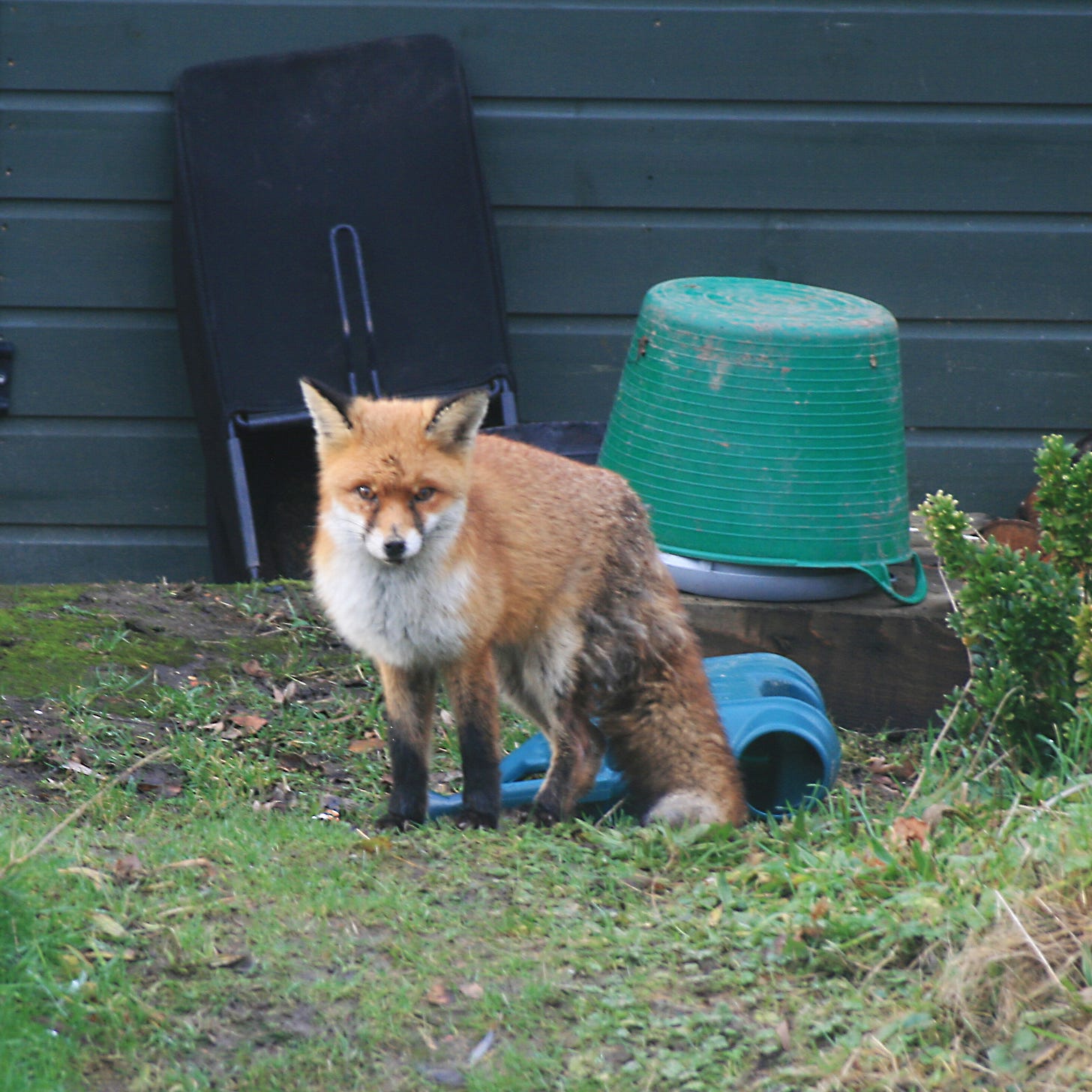I say “my garden”, but I’ve been wondering for a while just how accurate that is.
I mean, it’s more my garden than it is Tony’s next door, or Neil and Claire’s on the other side. They’ve got their own gardens, which aren’t mine, but then, I find I’m forced to ask myself, are any of us really able to say, beyond the rights conferred on us by a bit of paper from the Land Registry, (well, it’s a PDF now, isn’t it?), that the garden is truly ours? How deep does this ownership thing go?
There are other life forms keen to assert their claim to this patch of semi-domesticated wilderness, not least the eponymous brambles which lope across the landscape, careless of title deeds, hauling themselves over boundaries and putting down roots wherever they touch ground. The perennial nettles who weave their saffron-coloured roots into the top layer of the soil, and all manner of weeds, not so ostentatiously assertive, but no less intent upon conquest. The ones that parachute in, or tumble, readily fertilized and primed for germination, from a bird’s behind – this last the only explanation I can think of for the random scattering of holly seedlings throughout the space. But this last week, and especially on cold, clear nights, there’s been a new guy in town, and he’s not been shy about staking his claim.
hroah, hroah, hroah...
What the blazes was that? Some kind of weird bird call? Surely it’s a bit dark for that kind of malarkey? And there it is again, much closer now, almost, but not quite, at the back door... hroah, hroah, hroah... before moving further away and calling again. Now close, now a little way off, now getting louder again but further towards the back end of the garden – if I didn’t know better, I’d say it’s beating the bounds of its territory, and calling out to let anyone who might be around to hear know who’s taking charge. And of course, that’s just what’s going on – a dog fox, readying himself for mating season in January, and bragging to any interested parties about the size of his pad.
As someone used to working outdoors in winter, out in all weathers and often not quite finished in that hour after sunset, I’m used to the plaintive and slightly eerie cry of the vixen, not quite a banshee howl, but breathy and feminine. Ghostly, even. And the single glazing of our old sash windows has never prevented us from being woken by the racket made by a pair of mating foxes, as they chase each other all over the neighbourhood in the small hours. But this triple bark was unfamiliar to me – not unwelcome, just, a new addition to the collection of things my brain gets to curate and, having done the research necessary for identification, I’m delighted to be able to file away a new nugget of knowledge (the filing away, incidentally, is the easy bit. It’s the efficiency of the cataloguing process and the ability to retrieve information when needed that tends to be found wanting).
We’ve known for almost as long as we’ve been here that foxes frequent our garden. Rarely, we’ve seen them, but most often it’s their acts of petty larceny and endearingly mindless vandalism that give them away. The odd bit of gardening equipment left carelessly lying around and removed to a completely bonkers location. The chewed-through cable to a solar panel; the kidnapping of the pump for a water feature. I learned that foxes love string or twine under tension – I don’t know if they floss with it or just enjoy chewing it, but they will munch a hole in the net to your kid’s football goal without a thought. If you’re marking out new beds with a line and stakes, record everything as you do it and don’t expect to come back the next day to find the string still intact. They work by night, foxily twanging things with abandon, and have little respect for any claim to ownership you might think you possess.
I’ve yet to lay eyes on the particular creature that’s presently marching about and loudly laying claim to my beds and borders, but I couldn’t be happier that he’s showed up, and with such attitude. Winter is when I make my most ambitious plans for the garden, deciding what might go where, and what could grow where. It’s the time of year when I stand on a spot and envision how I’ll bring a new garden into being in this space, kidding myself that it will all go to plan, and to budget, and that I won’t get distracted half way through and wander off to do something else. Or, even more likely, just find something about what’s already growing so fascinating that I’ll be more than happy simply to let it go about its business, with little to bother it than my regular observations. But it’s this very act of deciding what the garden will be – an intention that lies at the very heart of what it is to be a gardener – that I sometimes feel we take for granted – permission extended to us by nature, not exactly under sufferance, or with reluctance, but in the full confidence that our licence might at any time be revoked, and the space reclaimed. And our time in the garden is riddled with reminders to this effect, from the plants that pop up without our permission, to the birds and the pollinators who fly by, bringing stories of the world beyond the walls, and fences, and hedges. To the furry, red fellow, striding around what I thought was my garden, but might – for a season at least – just as well be his.






Lovely!